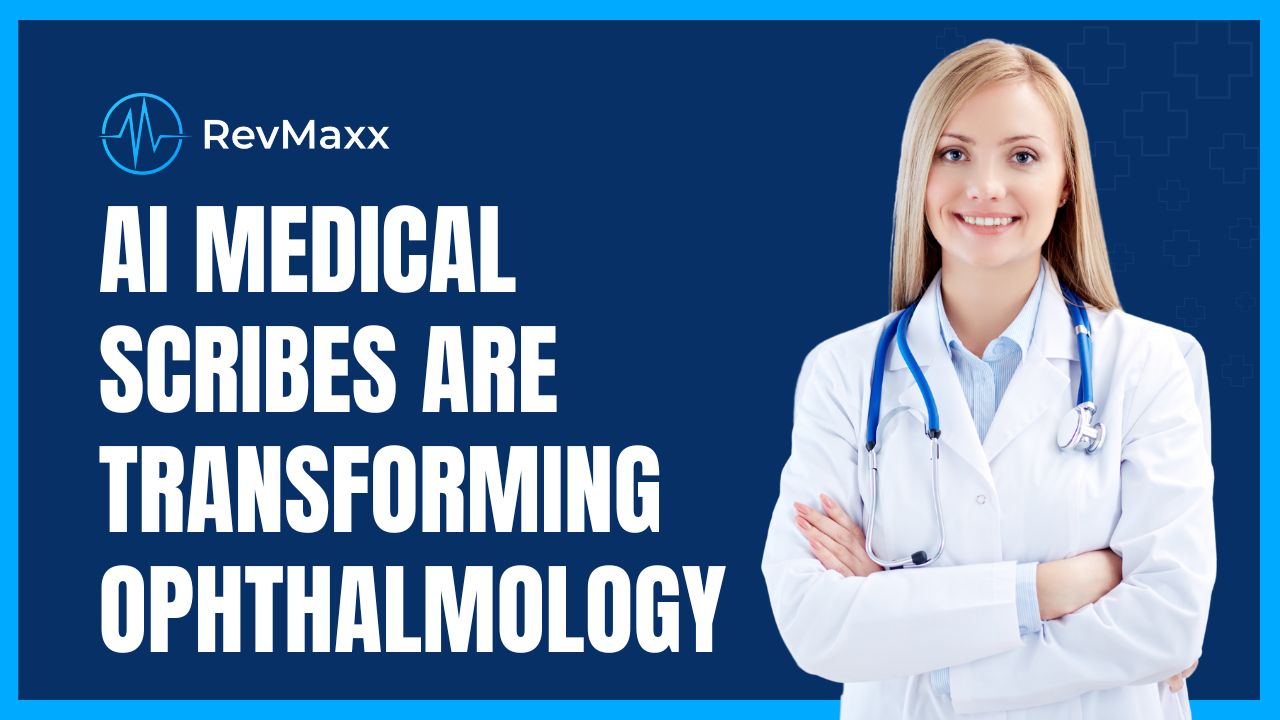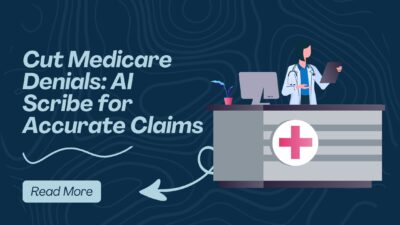In the fast-paced and precision-driven field of ophthalmology, staying ahead in patient care while managing administrative tasks is a constant challenge. Enter the game-changer: AI-powered medical scribes, an innovation transforming how ophthalmologists deliver exceptional care.
This blog post dives deep into the world of AI medical scribes, why they are a boon to ophthalmology practices, and the myriad advantages they bring to both clinicians and patients.
Why Do Ophthalmologists Have Scribes?
Here are key points explaining Why Do Ophthalmologists Have Scribes?:
- Reduce Documentation Burden: Ophthalmologists deal with intricate exams and detailed medical records. Scribes help by handling documentation, allowing doctors to focus on patient care.
- Increase Efficiency: With scribes managing administrative tasks, ophthalmologists can see more patients and reduce time spent on paperwork.
- Enhance Patient Care: By reducing time spent on data entry, ophthalmologists can devote more attention to patients, improving communication and satisfaction.
- Ensure Accuracy: Scribes ensure accurate and timely documentation, reducing the risk of errors in patient records, diagnoses, and treatment plans.
- Improve Workflow: Scribes help streamline office operations, ensuring smooth interactions between patients, physicians, and staff, improving overall workflow.
- Minimize Burnout: By offloading non-clinical tasks, scribes help reduce physician burnout, ensuring ophthalmologists can focus on their primary job—treating patients.
- Support Complex Procedures: Ophthalmology requires detailed and sometimes complex documentation, especially during surgeries or specialized procedures. Scribes help manage this workload effectively.
- Facilitate Compliance: Scribes ensure that all records meet legal and regulatory requirements, helping ophthalmologists stay compliant with medical guidelines and standards.
- Cost-Effective Solution: Having scribes allows ophthalmologists to reduce costs associated with administrative staff, enhancing practice profitability.
- Adaptability: With the advancement of AI technology, ophthalmic scribes are becoming increasingly efficient, offering real-time data input and analysis, thus improving decision-making.

What is an AI medical scribe?
AI medical scribes are intelligent, software-driven solutions designed to assist healthcare professionals in documenting patient interactions. Unlike traditional scribes, AI scribes leverage advanced machine learning and natural language processing (NLP) to transcribe, analyze, and organize medical data in real-time, streamlining workflows without the need for human intervention.
In ophthalmology, these scribes ensure that critical notes from intricate consultations—ranging from retina evaluations to glaucoma management—are recorded accurately and efficiently. They are a key part of AI MEDICAL SCRIBE Solutions, which cater to a variety of medical specialties.
Why Are AI Scribes Becoming Essential in Ophthalmology?
- High Documentation Demands
Ophthalmologists often deal with high patient volumes and complex diagnostic procedures. The need to document detailed findings, treatment plans, and follow-up instructions can consume significant time. AI scribes alleviate this burden, allowing practitioners to focus on patient care. - Precision Matters
In a specialty where precision is paramount, errors in documentation can have significant consequences. AI scribes minimize the risk of human error, ensuring consistency and accuracy in medical records.
These benefits extend across other specialties, such as Medical Scribe for Cardiologists, Medical Scribes for Emergency Departments, and Medical Scribes for Psychiatrists.
Why Shift from Human Scribes to AI Solutions?
Traditional human scribes have long been valuable in medical settings, but they come with challenges such as training, turnover, and variability in expertise. AI medical scribes, however, offer:
- Cost-Effectiveness: Eliminating the need for hiring and training personnel.
- Scalability: Supporting practices of all sizes without logistical constraints.
- 24/7 Availability: Always ready to assist, regardless of clinic hours or emergencies.
The scalability of AI solutions makes them perfect for use in diverse fields, including Medical Scribes for Pediatricians, Medical Scribes for Orthopedists, and even Medical Scribes for Obstetrics and Gynecology.
Key Advantages of AI Medical Scribes for Ophthalmology Practices
- Enhanced Patient Experience
By automating documentation, ophthalmologists can dedicate more time to engaging with patients, answering questions, and delivering compassionate care. - Time Efficiency
AI scribes reduce documentation time significantly. This allows clinicians to accommodate more patients in their schedule without feeling overburdened. - Streamlined Workflow
AI systems integrate seamlessly with Electronic Health Records (EHR), enabling smooth data transfer and reducing redundancy. - Compliance and Accuracy
With built-in compliance checks, AI scribes ensure documentation aligns with regulatory standards, reducing the risk of audits and legal issues. - Focus on Growth
Practices adopting AI scribes can reallocate resources toward business expansion, staff training, or adopting new technologies.
From ophthalmology to dermatology and even veterinary practices, the versatility of Medical Scribes for Dermatology and Medical Scribes for Veterinary demonstrates how AI scribes can be tailored to any medical specialty.
AI to the Rescue: Revolutionizing Ophthalmology Documentation
AI scribes go beyond transcription. Their capabilities include:
Real-time speech-to-text transcription during consultations.
Automatic categorization of patient data for easy retrieval.
Intelligent suggestions for treatment plans based on patient history.
Generation of referral letters or summaries with a single click.
AI solutions even simplify documentation formats like AI SOAP notes, ensuring that medical records are clear, concise, and actionable across specialties.
Benefits Beyond Efficiency: Transforming the Future of Care
AI scribes are not just tools; they are catalysts for change in ophthalmology. By embracing this technology, practices can achieve:
- Better Work-Life Balance for Clinicians: Reducing administrative workload lowers burnout rates among ophthalmologists.
- Higher Patient Satisfaction: More focused consultations lead to better patient outcomes.
- Data-Driven Insights: AI tools provide valuable analytics, helping practices identify trends and optimize care delivery.
These advantages mirror the benefits seen in other specialties, such as Medical Scribes for Dentists, who face similar documentation challenges.
The Future is Now
The adoption of AI medical scribes marks a significant leap in how ophthalmologists manage their practices. By offering unmatched accuracy, efficiency, and scalability, these digital assistants are empowering clinicians to excel in what they do best—providing exceptional care to their patients.
For ophthalmologists ready to embrace the future, integrating AI scribes is not just an option; it’s the next logical step toward a smarter, more patient-centered practice.
Use AI Medical Scribes to Transform your Medical Documentation
RevMaxx, the AI-driven medical scribe, empowers healthcare providers to focus on what matters most—patient care. By automating documentation and improving workflow efficiency, RevMaxx helps reduce burnout in physicians, hospitals, and emergency departments.
We do all your SOAP notes with automated ICD-11 and ICD-10 Coding. Enhance your clinical documentation with RevMaxx’s AI-powered medical scribe.









